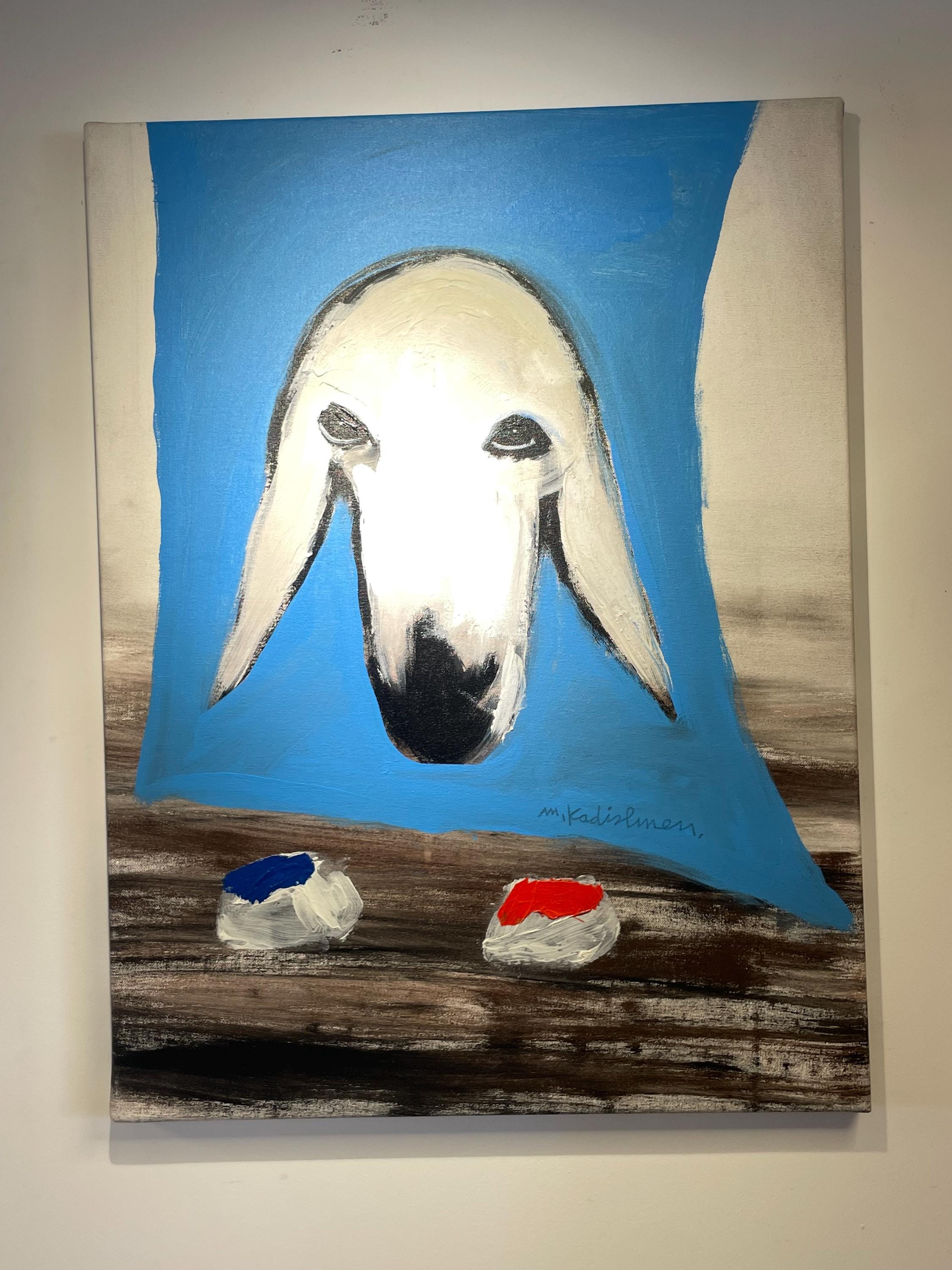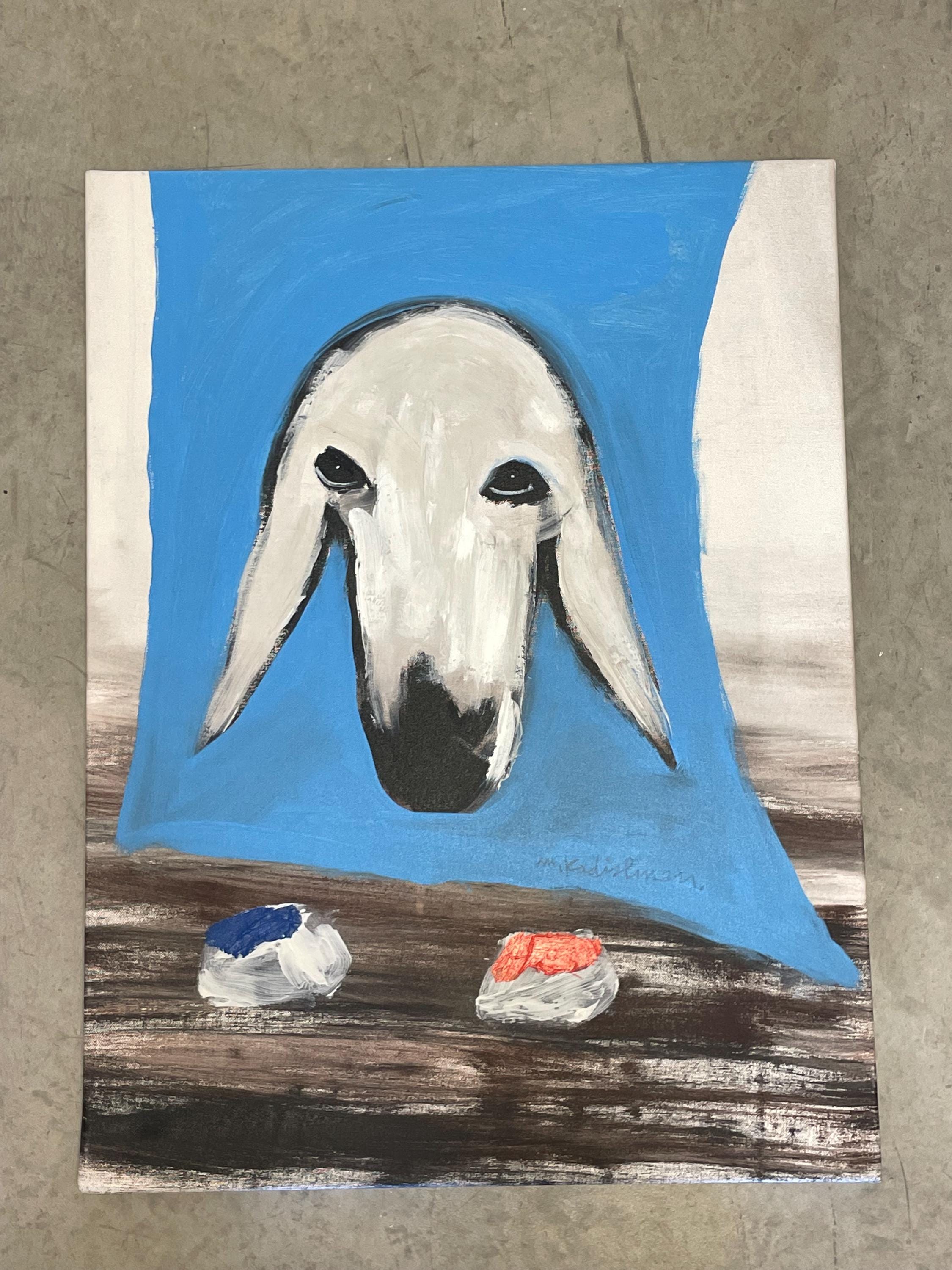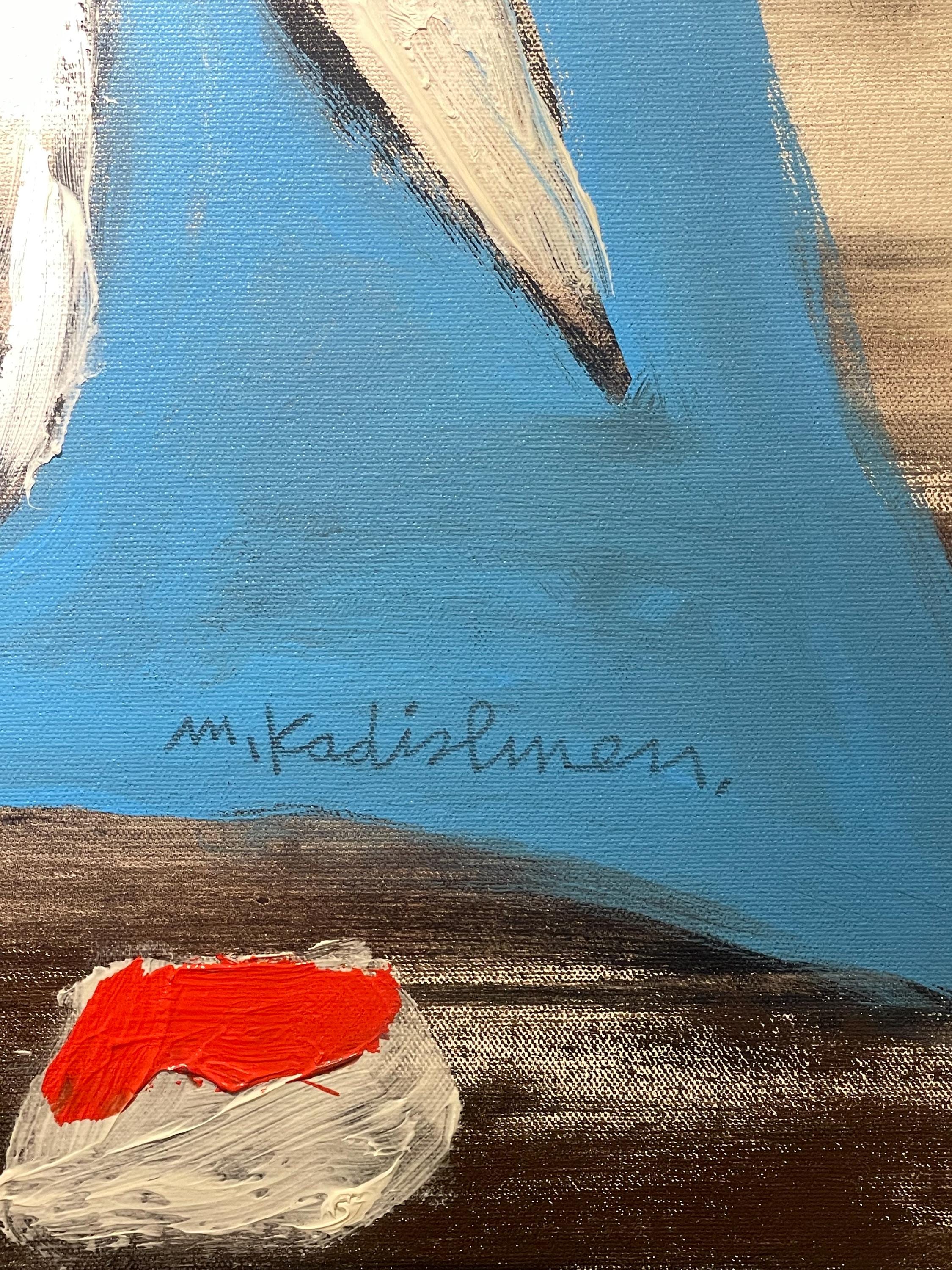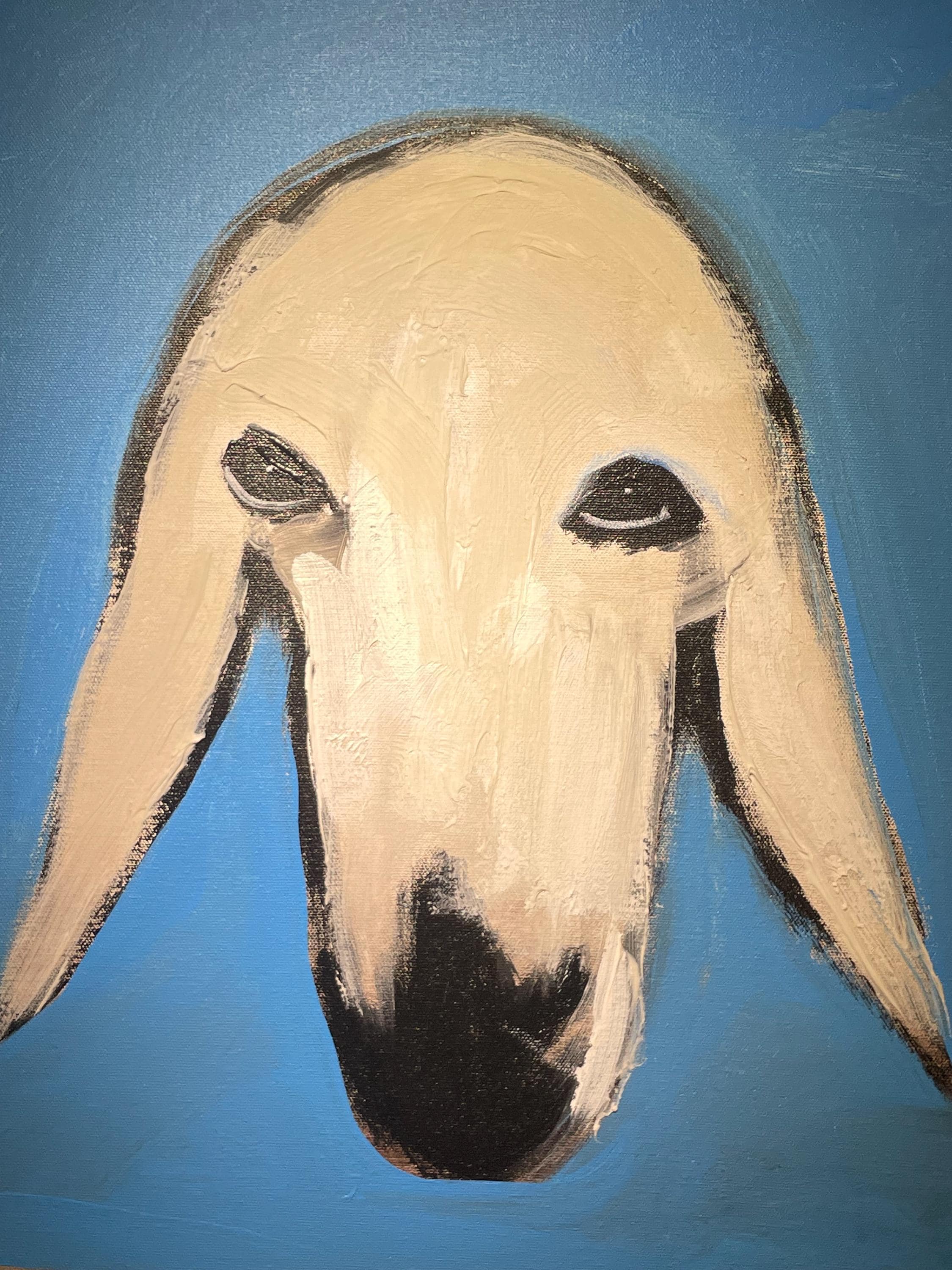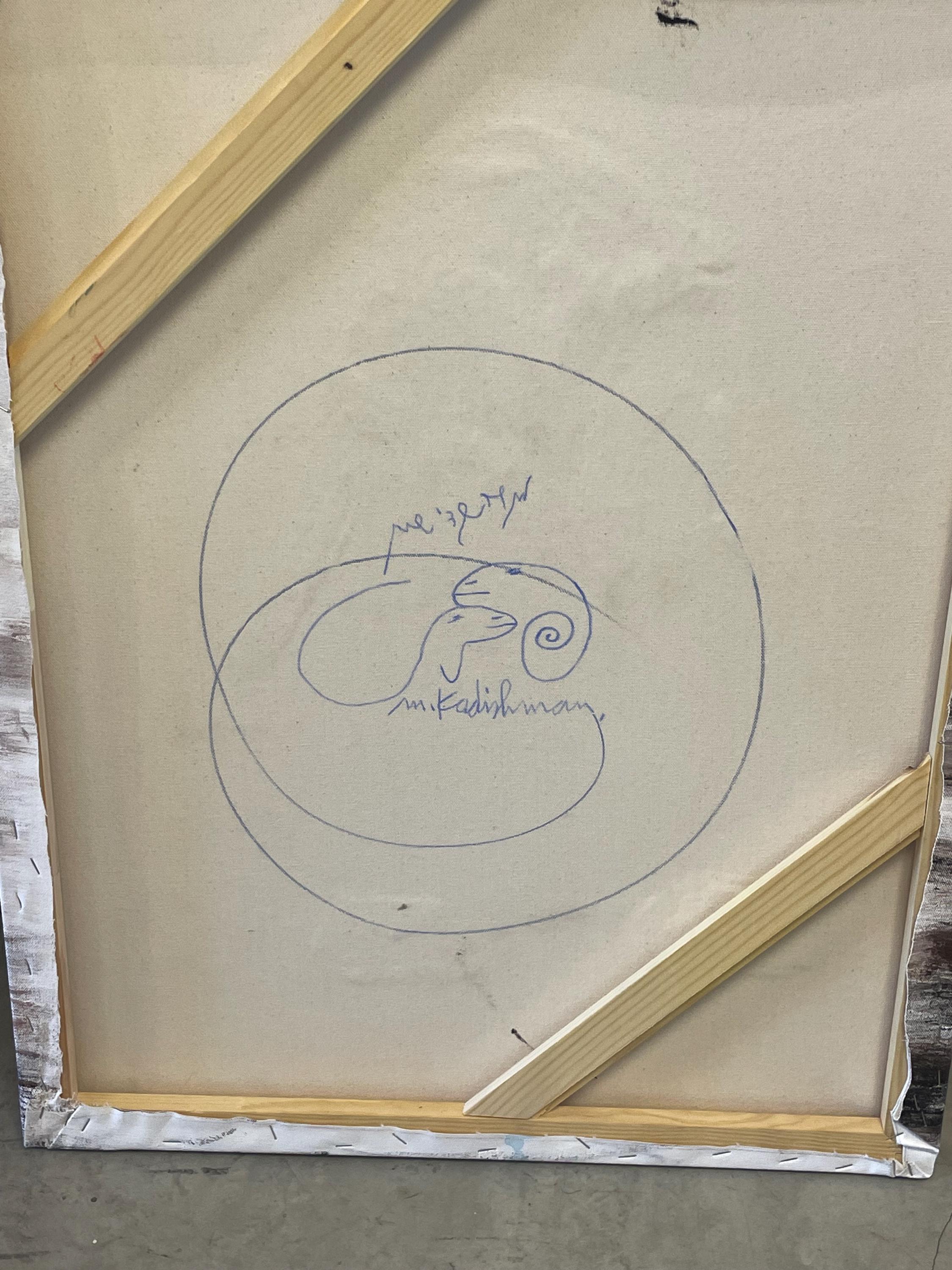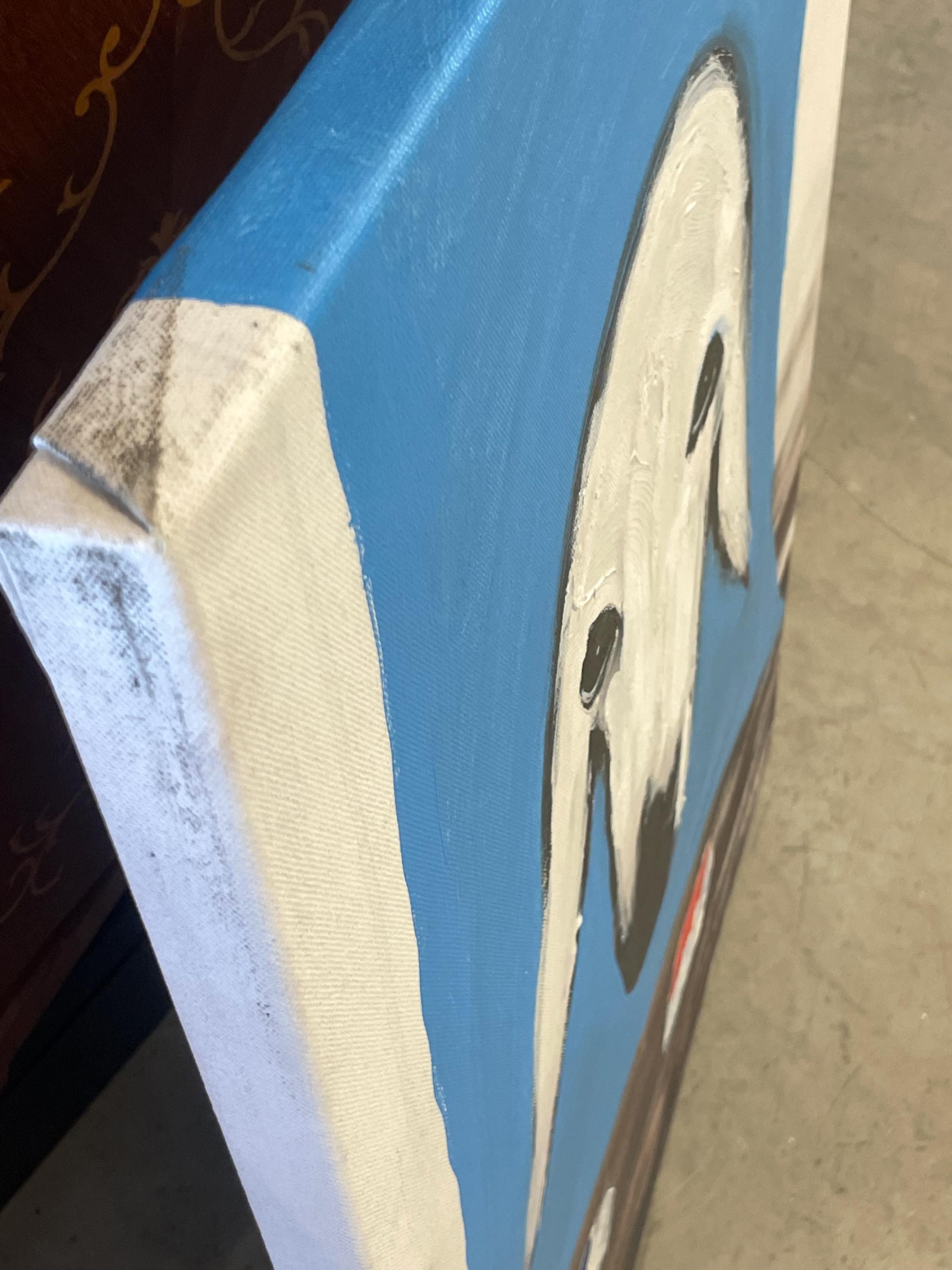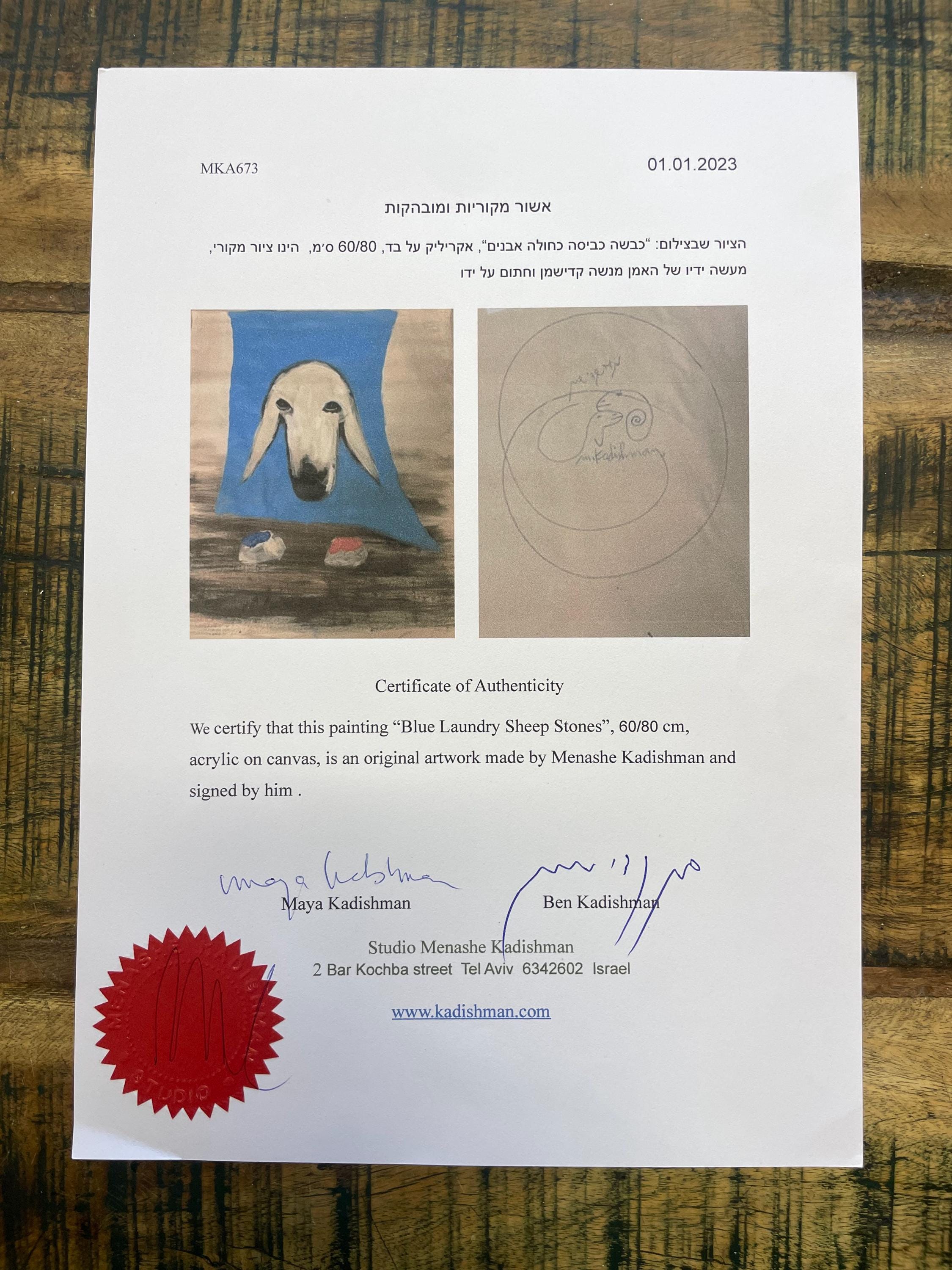Menashe Kadishman ORIGINAL WORK " sheep " oil on canvas size 32*24 in 60*80 cm c.1985
$3,600.00
Menashe Kadishman (Hebrew: מנשה קדישמן; August 21, 1932 - May 8, 2015) was an Israeli sculptor and painter.
Kadishman's artworks are presented in central locations in Israel, such as Habima Square and his paintings can be found in many different galleries in Israel. He is most famous for his metallic sculptures and colorful sheep paintings.
Biography
Kadishman was born in the British Mandate Palestine in 1932. His father, who was a pioneer, died when Kadishman was 15 years old. The young Menashe left school to help his mother with housework and to earn money.
From 1947 to 1950, Kadishman studied with the Israeli sculptor Moshe Sternschuss at the Avni Institute of Art and Design in Tel Aviv, and in 1954 with the Israeli sculptor Rudi Lehmann in Jerusalem.
In 1959, he moved to London, where he attended Saint Martin's School of Art and the Slade School of Art. During 1959 and 1960 he also studied with Anthony Caro and Reg Butler. He remained here until 1972; he had his first one-man show there in 1965 at the Grosvenor Gallery.
His sculptures of the 1960s were Minimalist in style, and so designed as to appear to defy gravity. This was achieved either through careful balance and construction, as in Suspense (1966), or by using glass and metal so that the metal appeared unsupported, as in Segments (1968). The glass allowed the environment to be part of the work. Kadishman lived and created his house in the city center of Tel Aviv. Kadishman was divorced and has 2 children. His son, Ben, is also a painter, and his daughter, Maya Kadishman, is an actress who is married to the artist, Eran Shaking.
On May 8, 2015, Kadishman died after he was hospitalized at Sheba Medical Center in Tel Hashomer.
Motifs
Portrait of Menashe Kadishman, 1979
Photographer: Stanley I. Batkin
In his youth, between 1950 and 1953, Kadishman worked as a shepherd on Kibbutz Ma'ayan Baruch. This experience with nature, sheep, and shepherding had a significant impact on his later artistic work and career. The first major appearance of sheep in his work was in the 1978 Venice Biennale, where Kadishman presented a flock of colored live sheep as living art. In 1995, he began painting portraits of sheep by the hundreds, and even thousands, each one different from the next. These instantly-recognizable sheep portraits soon became his artistic "trademark".
